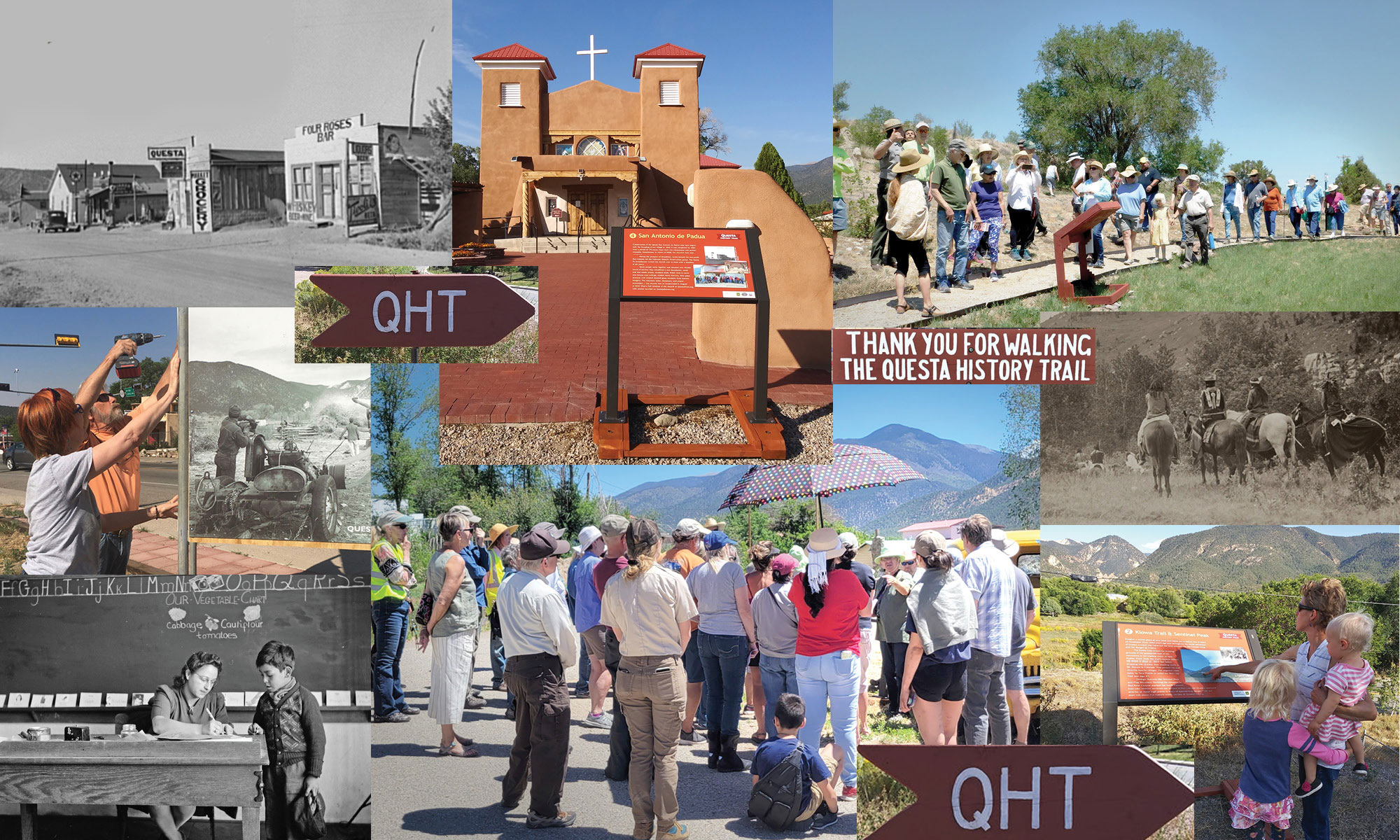Are some of Questa’s families Crypto-Jews? This is a sometimes controversial theory in several ways. Read below, and see what you think.
Spanish conquistadors began their major explorations to claim more lands, and convert more people to Catholicism, during the years of the Inquisition in Europe. This was a period that began after Queen Isabella (famous in the U.S. for funding the explorations of Christopher Columbus in 1492) reversed centuries of Arabic rule in Spain. The enforced return to a uniformly-Catholic country had a drastic effect on the diverse population of the Iberian Peninsula. Non-Catholics became refugees seeking distance from either forced conversion or death. Most muslims retreated to the uniformly Islamic countries of North Africa, though the Jewish Spaniards had no such option. The Inquisition grew to include much of Europe and the Middle East, resulting in the brutal religious wars that ultimately severely weakened the long-lived, vast, and powerful Islamic empire. And, ultimately made for a weaker Spain, one that within a hundred years was no longer a maritime superpower.
The story of apparent crypto-Jewish presence in rural New Mexico and Southern Colorado date to this time, as many Jewish families fled first to Portugal, then as this too became unsafe, boarded ships with the Conquistadors on their way to what would become the Americas. Some historians believe these travellers could’ve been as much as 40% Jewish. Many Jews found refuge first in Peru, and then Mexico City. This was a short-lived peace, as the practices of the Inquisition came to the New World, where even the governor of New Mexico and his wife were accused of being Jews in the late 1600s. Persecutions of Jews were not curtailed in Mexico until the late 1880s. Generations of crypto-Jewish families followed the Rio Grande north, moving further and further into the frontier as New Mexico became populated.
Their traditions were bound to have splintered after so many generations of travel and hardship, surrounded by the domination of the Catholic Church. A more proper designation by then would’ve been the broader term “Conversos,” meaning any family made to, or descended from family who were made to convert to Catholicism. A “Crypto-Jew” being someone who still actively, though secretly, practiced their Jewish faith. By the time these families reached northern New Mexico, many generations of Native intermarriages had no doubt occurred, true with most settlers along the Rio Grande. But regional anecdotes abound of elders who refused to eat pork and preferred Saturday church services, and of candles lit on Friday nights for reasons not remembered, and of livestock slaughtered with a special, possibly “kosher” knife reserved for this purpose.
This is a controversial issue, however, as many argue their memories of wooden toys, like a Jewish dreidel, were also used in Islamic households, and would have been common to all Spanish residents in the years preceding these voyages to the New World. Likewise, the faith of Islam also abstains from eating pork and would have influenced the Spanish life-ways. Many traditions in New Mexico trace their origins to practices in the Middle East, right down to our turquoise door frames.
But you can’t argue with DNA evidence. Given the many generations since the years of the Spanish Inquisition, New Mexico’s residents each have over 1 million ancestors when dating back to this time of so many ethnicities sharing the Iberian Peninsula. The chances of a Jewish ancestor are strong.
Traditional Jewish families tended to marry within their own groups, and did so for over 4,000 years. Though Crypo-Jewish families may also have lived closer and more respectfully among Native Americans, as another persecuted population in the early years of settlement in the Americas. Definitive studies in the rural southwest in the last few decades reveal trace disease markers unique to the Jewish population. These have been found in high percentages among certain families who very much assumed they were nothing but Spanish and Catholic. Confusion continues, however, as some of these markers are unique to the Ashkenazi Jews of Eastern Europe, and not the Sephardic Jews of the Iberian Peninsula and the Middle East.
Many Jewish merchants from Eastern Europe came to the US southwest along with other nationalities, in the 1800s.
Some writers have put forth the argument that an interest in Spanish Jewish identity is an attempt to further claim a pure European lineage, i.e. one not mixed with Native American blood.
The history of families in the Southwest is a complicated one, of Conquistadors and priests coming to the New World as single men who often sought Native wives, and their progeny marrying the sons and daughters of French trappers or German shopkeepers, even while Catholicism was accepted as the predominant force for governance in a rural area where the church may have been the sole source of community laws. Until very late in our history here in Questa, not even these laws were formal, but were the very do-it-yourself religious practices of the Penitente Brotherhood.
Resources:
Lectures and writings of Journalist and Educator, Norma Libman
Lectures of former NM State Historian, Estevan Rael-Galvez
plus:
https://www.theatlantic.com/magazine/archive/2000/12/mistaken-identity-the-case-of-new-mexicos-hidden-jews/378454/
https://www.smithsonianmag.com/science-nature/the-secret-jews-of-san-luis-valley-11765512/
http://articles.latimes.com/2004/dec/05/nation/na-heritage5
*the articles above cite many of the same writers/thinkers, one being Stanley Hordes, a former NM State Historian who arrived in NM with a great interest in the theory of crypto-Jews’ heritage in remote New Mexico. Later NM State Historian, Dr. Rael-Galvez has not found the evidence convincing, arguing that over 500 years of intermarriage renders what may have been true in 1500 fairly irrelevant today.
